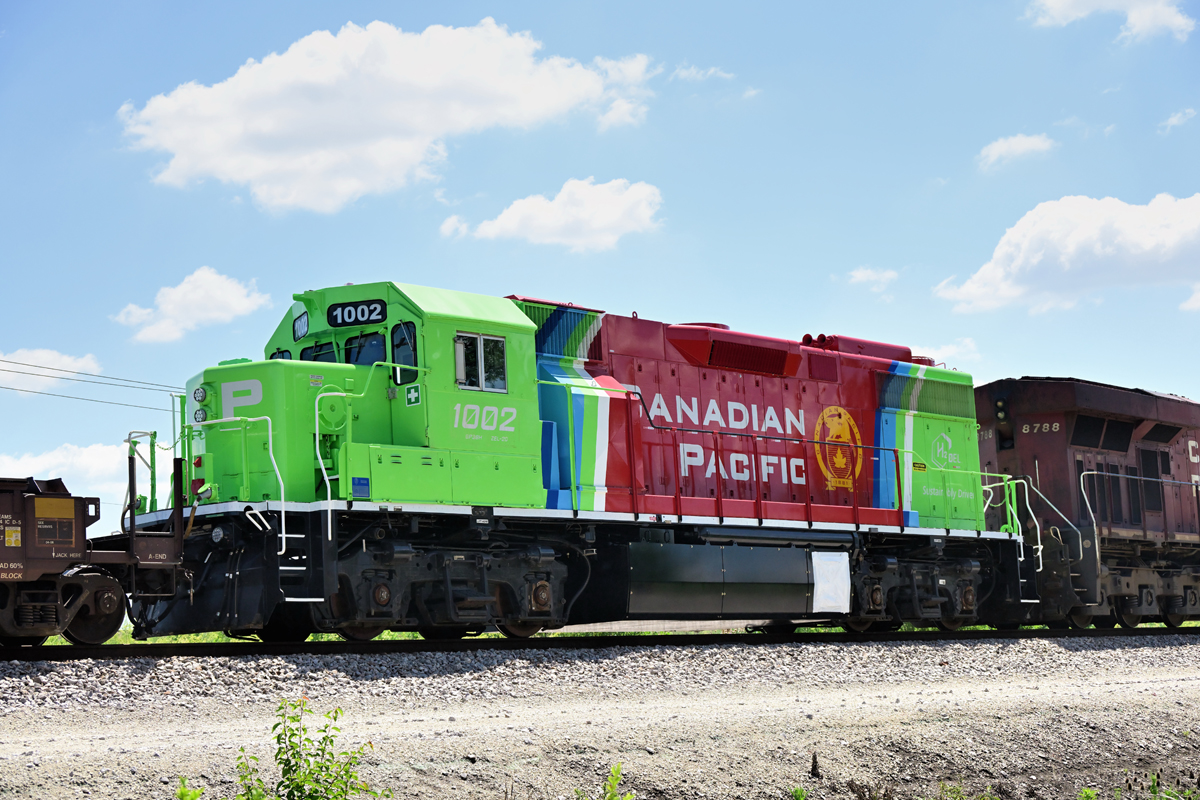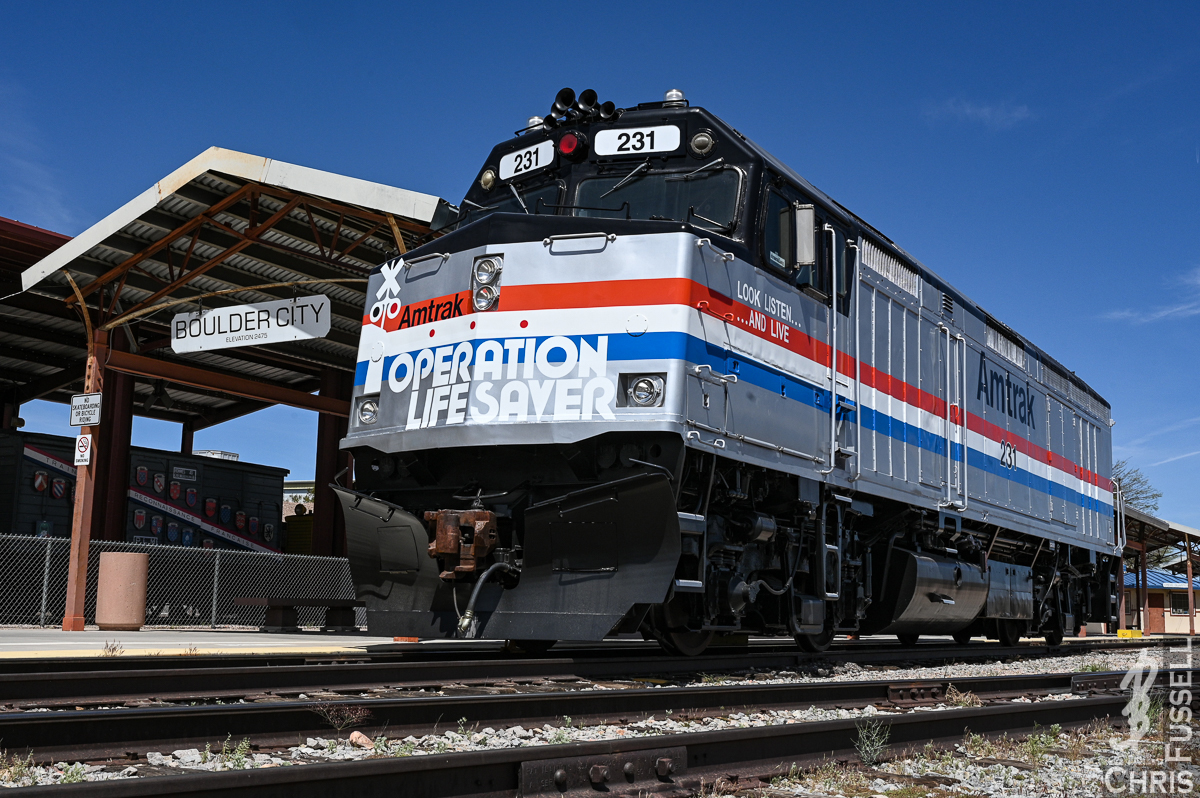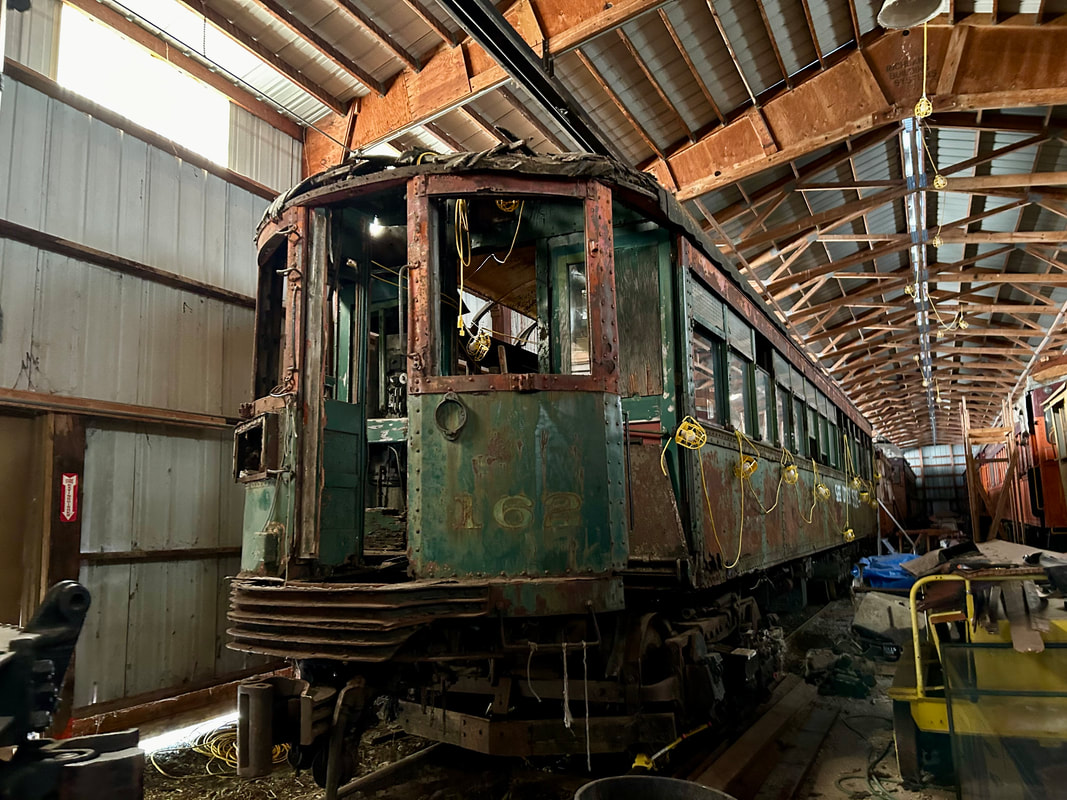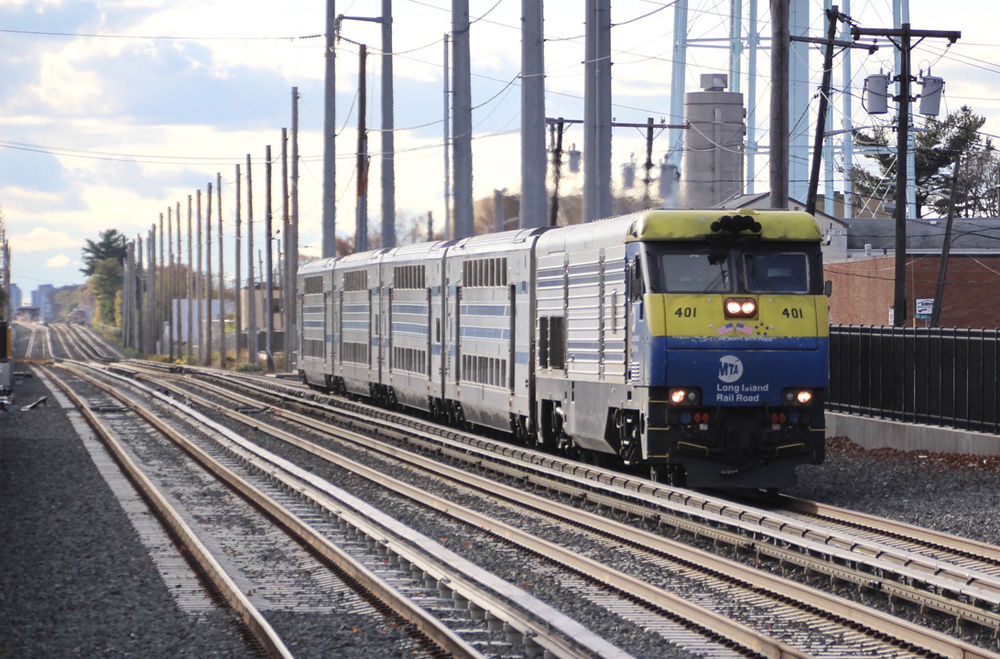The documents came from the Smithsonian Institution, which collected them between 1981 to 1984. With an Aug. 1 deadline to move or shred the documents, Smithsonian archivist Craig Orr offered the drawings to the Pennsylvania Historical & Museum Commission, but the commission was unable to accept the materials on that schedule.
Kurt Bell, an archivist with the historical commission, offered to help find new homes for the materials. Bell says in an interview with Trains News Wire the collection included more than 100 boxes, each containing three cubic feet of drawings. There were more than 639 cubic feet of materials. Mostly bridges, stations, and other structures, the drawings had never been processed and had been held at the Smithsonian’s storage depot in Suitland, Md., since their acquisition.
Bell arranged for the Anthracite Railroads Historical Society, the New York Central System Historical Society, the Pennsylvania Railroad & Technical Society, and the Reading Company Technical & Historical Society to accept 81 boxes with an additional 31 boxes and seven crates of material going to the Industrial Archives & Library in Bethlehem, Pa. The University of Michigan received one box of Michigan Central documents, while the University of Connecticut’s Dodd Research Center took three boxes of New Haven items.
Rick Bates, a volunteer archivist at the Reading Co., museum, says, “Overall, this is a really monumental achievement in rail history preservation. I can’t speak for the other railroads, but for the Reading, this more than doubles the number of former Reading Railroad buildings for which architectural plans are known to exist in publicly accessible archival sources.”
Nicholas Zmijewskis of Industrial Archives and History says “We have begun going through the Lehigh Valley material, which is composed primarily of bridge and structure drawings, with a lot of marine and even some Morris Canal dating from their control of the property. Several researchers have already used two of the drawings.” Industrial Archives received the largest portion of the Smithsonian materials.














The plan to destroy them was beyond pitiful – it’s good they’ve been saved.
They probably could have talked Google into taking and documenting the records. That would have been great if it could have happened.
CURTIS Is 1027 North 7th Street still there?
Last I checked (about 20 years ago) the building was still standing, subsumed into the campus of Milwaukee Area Technical College.
For TRAINS-MAG subscribers too young to remeber the move, the new (in the late 1980’s) Kalmbach Publishing address at 21027 Crossroads Circle, Waukesha (actually, Brookfield Township) was designated as a tribute to the former Milwaukee address.
Everett Street is of course gone without a trace. There is a hidden remnant of The Milwaukee Road in the gleaming Amtrak station rebuilt from the egregious 1965-ugly Milwaukee Road Union Depot. The formerly hideous exterior is all new (thankfully). The ground floor is all newly rebuilt for Amtrak and bus passengers. The third floor is refurbished for use by Wisconsin DOT. The shabby middle floor remains (well hidden) as it was unfortunately used by Milwaukee Road employees.
The late, and dearly missed Jim Scribbins told me before the Milwaukee’s Everett St. depot was torn down that the upstairs were like a 19th century time capsule, while downstairs in the 1930,s a Hiawatha-themed redo was done. Legend has it that David P. Morgan, sweating the current issue of Trains mag, would check to see if Scribbins was working late and would wander down from 1027 N. 7th St. to chew the fat. Not a long walk with half pint in hand.
Naturally, one would wish for recordings of those far-ranging and informative conversations.
Steve and Ce Mc – The problem with digitizing records (other than the expenses Steven mentions) is that they still have to be sorted through, then indexed.
I’ve worked in places where 95% of the “records” were first drafts, posters for staff partries, sketches, useless memos, stupid e-mails and other garbage fit only for the recycling and of no use to anyone. If you ask the lawyers or the managers it all had to be preserved. Which is why I never asked.
.
The problem with preserving records using modern techniques to record them is it takes labor and money, often in short supply at museums, libraries, and similar.
Then, there’s that famous bit of advice attributed to Richard Nixon:
“Leave no witnesses, no documents, and no incriminating evidence.”.
The above comments are generic in nature and do not form the basis for an attorney/client relationship. They do not constitute legal advice. I am not your lawyer. For a good time call Suzy at PE6-5000.
I am not a historian by profession but have a life long interest. As a scientist I cannot fathom throwing away historical data! In my experience, as soon as it (data) is discarded it is needed, becomes relevant or pertinent to current interests or activities.
SOme libraries will offer “old” books for ssale to their patrons; I have taken advantage of such offers.
Why is the Smithsonian cleaning out one of the attics?
Most likely the need the storage space. Many museums typically end up with more material than they know what to do with. Sometimes they hold deasession sales to clear space and raise funds.
Libraries will sometimes sell books that haven’t been checked out in years to used book dealers or toss them in the dumpster. Again, it’s a question of space.
Thank goodness these documents will go to those that can make use of them!
When the IC closed Central Station and the downtown HQ, tons and tons of railroad history ended up in a city dump. Employees were running around trying to save things of value. IC Industries was trying to stay ahead of the preservationist employees by getting more contractors in to get the stuff out the back door faster than employees could get it out the front. Frantic phone calls led to more people just showing up trying to save a scrap of history.
I even remember when a certain city closed one of its transit bus barns. Turns out it also was a car barn for a local trolley service dating back many years. The trolley records were still there sitting in old large cabinets untouched. When the city announced the barn was up for sale, preservationists requested to save the trolley records for a local museum. The city said they would get back to them.
At 4AM the next morning 2 city dump trucks showed up, loaded up the old record cabinets and hauled them away to the city incinerator. The city then notified the preservationists that there were no records or cabinets to donate as none existed.
I am not sure why these types of records are disliked. Libraries and museums are always looking for raw materials for research and additions to their digital libraries.Even if they don’t have staff or funding at the time they are available, they still stockpile them to help them win grants to have them compiled and documented.
Its still a mystery.
A corollary has to do with family archives and memorabilia. The dilemma facing the inheritor (read person left taking care of the problem) is to dispose or not of the boxes of family letters, photos,etc. Does one just throw away family history?
Why is the Smithsonian cleaning out one of their attics?
Has the Smithsonian or anyone else either micorfilmed the documents or had them digitized? Paper is heavy, film is lighter, bits and bytes are lighter yet!
In the 1970’s, Penn Central had boxes of stuff sitting on the benches in the closed waiting room of Michigan Central Station, Detroit. I looked in one box, it was for a track layout in Saginaw, Michigan. If the track still exists it has likely changed hands a number of times; if the new owners want to know the track layout they’d have to go out and look for themselves.
I can’t imagine a more difficult profession than archivist, deciding what to save, how to preserve it, and how to index the collection. It’s not just of historic or hobby value – if a bridge or a culvert or a building or a track layout or a signal system still exists, one must keep an accurate record and it must be retrievable.
In my own profession any record that was no longer accurate or for a facility that no longer existed, was marked as to its status, kept for three years (in case of a liability lawsuit or past incident being investigated) then dumped. Why? Because the clutter would make keeping and finding accurate records of current facilities more difficult. If I had kept everything, then nothing would have been findable.
While my own dumped records would have been of no interest to historians or industrial archeologists or hobbiest, I can see why obsolete railroad records might be more valuable. Someone might want the drawings for a depot torn down eighty years ago.
“Why is the Smithsonian cleaning out one of their attics?”
Because people are constantly coming up with more stuff that “they” (the people making the stuff or the curators) believe “belongs in the Smithsonian!”
Imagine if every rail object that someone thinks “belongs in the Smithsonian” were actually crammed in there–you’d need a separate museum bigger than the Air & Space Museum for the Alco PA, the GG1, the Big Boy, the 4-4-0, the Pennsy K4s, the Reading T-1, the SP Daylight, the UP gas turbine electric……… and this is JUST the locomotives……
It becomes a sign of mature wisdom to have to be able to look at a third-rate “historical” object and say “we can’t save it ALL…..”
One can come up with innumerable examples wherein irreplaceable archives of historical value were trashed….think not only of RR headquarters and large stations, but of thousands of “agencies.” Bulldozed with their contents.